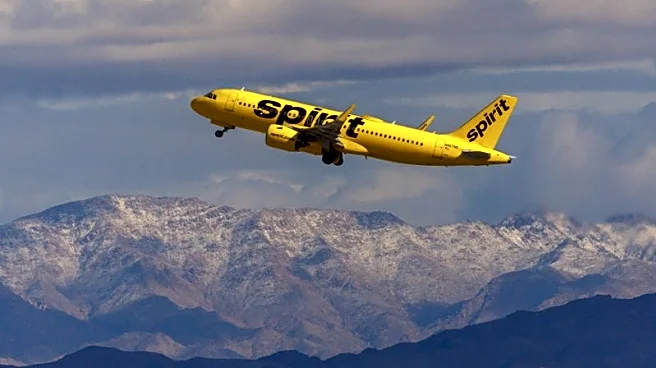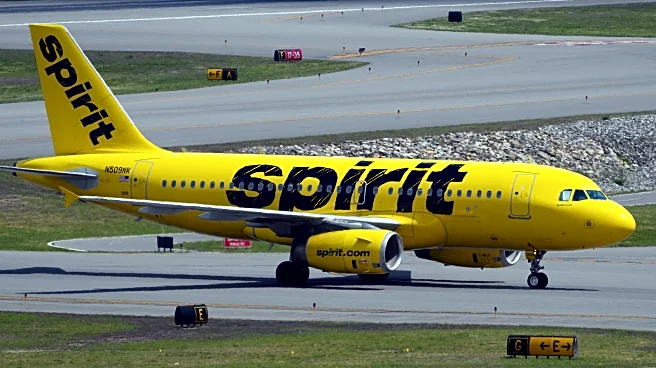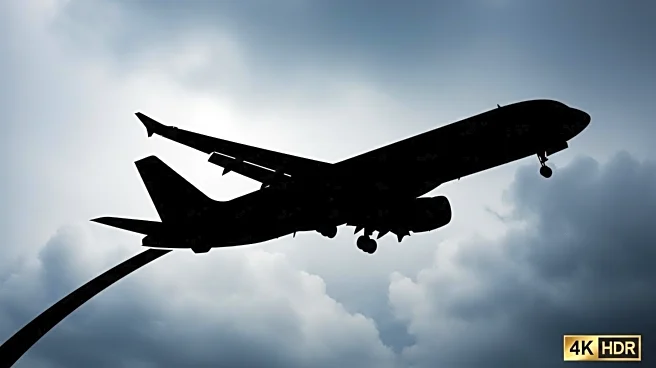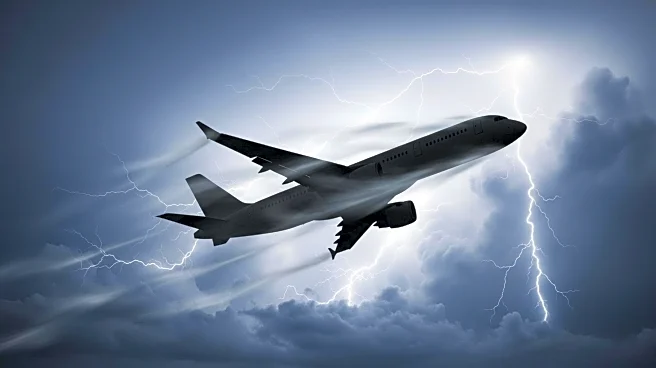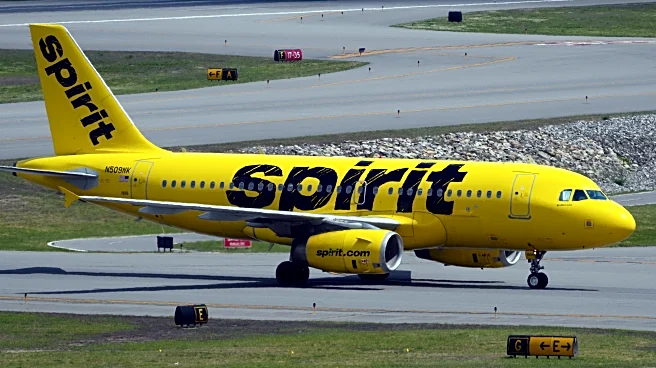What's Happening?
Spirit Airlines has filed for bankruptcy protection for the second time in less than a year. The airline, known for its low-cost flights, is seeking relief from its debts after previously emerging from Chapter 11 bankruptcy. This move indicates ongoing financial struggles for the company, which has faced challenges in maintaining profitability amid fluctuating demand and operational costs. The bankruptcy filing aims to restructure the airline's financial obligations and stabilize its operations.
Why It's Important?
Spirit Airlines' repeated bankruptcy filings highlight the volatility and financial pressures within the airline industry, particularly for low-cost carriers. The company's financial instability may affect its employees, customers, and stakeholders, leading to potential disruptions in service and changes in business strategy. This situation underscores broader economic challenges faced by airlines, including competition, fuel costs, and changing consumer behavior. The outcome of Spirit's bankruptcy proceedings could set precedents for other airlines facing similar financial difficulties.
What's Next?
As Spirit Airlines navigates its bankruptcy proceedings, the company will likely focus on restructuring its debts and operational strategies to regain financial stability. Stakeholders, including creditors, employees, and customers, will be closely watching the developments. The airline may explore options such as cost-cutting measures, strategic partnerships, or changes in service offerings to improve its financial outlook. The industry will also be monitoring Spirit's case for insights into managing financial crises and adapting to market conditions.





